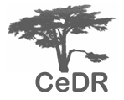


Public welfare services, disability organisations and governance structures in Finland
Antti Teittinen, Finnish Association on Mental Retardation
Abstract
Disability organisations as active service providers have introduced a new dimension to welfare services alongside the established public service sector because the primary forms of activity of many of these organisations include similar types of services. The present sphere of welfare services has been created as a result of the uncontrolled and unpredictable amalgamation of different actors and environmental factors. Hence, the domains and responsibilities of disability organisations co-operating with public services are poorly defined and their effect on the overall operation of the welfare state is difficult to ascertain in advance. Social networks as a collaborational tool, in their present manifestations, are very flexible and they usually rise to the occasion, whatever it might be, depending on the size and versatility of the network. The increasing reliance on the third sector organisations has transformed the welfare state. The emphasis has been shifted from normative governmental control to the customers' self-initiative, and the selection of choices available in services offered has at least in principle been increased. One of the characteristic features of the transformation would appear to be the constant redefinition of the relationship between the public sector and civil sector. To better grasp the unpredictable and flexible nature of the relationship between the two sectors one should try to proportion the significance of social networks to the processes of societal change at a more general level. The foundation for the co-operation of both national organisations and local associations with the public sector is negotiation society, which is based on the continuous search for equilibrium. One is also dealing with a power relationship: the transitory states of equilibrium may also be understood as attempts at determining the generally acceptable form of dividing power. The analysis of this power relationship is an interesting topic, because, on the one hand, it involves the relationship between the customer and the public official as well as the role of associational services; and, on the other hand, it involves the duties of the public official to his/her organisation. In an attempt to evaluate disability organisations on the basis of the starting points presented above, one may condense the issue in the following three questions:
- The role of disability associations in their local circumstances and culture.
- The co-operation between local disability associations and national disability organisations.
- Disability organisations as a part of the existing social order.